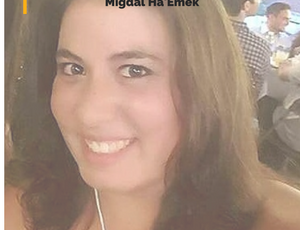Love it or hate it, nothing says Rosh Hashanah like gefilte fish.
You may have thought apples, honey, round challah, and maybe even pomegranates were the only symbolic foods eaten on Rosh Hashanah. However, fish is a long-standing and lesser-known part of the customary Rosh Hashanah meal – for more than one reason. Many people eat the head of a fish and pray that they and their family may be like the head and not the tail, that they may enter the Jewish new year from a place of strenght and leadership. Additionally, many people eat fish, either in whole or in part, on Rosh Hashanah because fish represent fertility and abundance.
Whether you’ve been eating fish heads for years or you’re just looking for a new addition to your Rosh Hashanah table, we caught up with WUJS Israel alumna and co-founder of The Gefilteria, Liz Alpern to bring you the artisanal gefilte fish and carrot citrus horseradish recipes, just in time for the holiday!
The Gefilteria’s At Home Basic Gefilte
Originally published in The Jewish Daily Forward
Yield: About eight, three-ounce appetizer servings of gefilte
Broth Ingredients:
4 quarts water
Heads, bones and tails from fish (A fishmonger can save these for you if he/she sells you fish as a filet, just ask.)
3 teaspoons salt
3 onions, peeled and roughly chopped (reserve skins)
4 medium carrots
3 tablespoons sugar
Fish Ingredients:
1 medium onion, peeled and roughly chopped
12 ounces whitefish
4 ounces pike
¼ cup sugar
1.5 teaspoons salt
1 teaspoon white pepper
2 eggs
2 tablespoons oil (vegetable or olive oil)
To make broth:
1. Place fish bones, vegetables, salt and sugar in a large stock pot and bring to a boil. Lower heat to simmer and cover until gefilte is ready to be cooked.
2. Skim off any foam that comes to the surface. (The broth can also be made without the fish parts.)
To make fish:
1. Place onions in food processor and pulse until completely ground.
2. Add whitefish and pike filets, sugar, salt, white pepper, eggs and oil to the bowl of the food processor and continue to grind, using a rubber spatula or spoon between pulses to make sure that ingredients are evenly distributed.
3. Pulse in food processor until mixture is light-colored and evenly textured throughout.
4. Scoop mixture into a bowl. Wet your hands and form fish into balls, according to your size preference. They should be a little bigger then a walnut but smaller then a matzo ball. They will expand as they cook.
5. Place them one by one into the broth. When all eight servings are in the pot, make sure heat is low and place top on the pot. Cook gefilte in the pot for 30 minutes.
6. Remove gefilte with a slotted spoon and place in a bowl or deep serving dish.
7. Spoon broth over the gefilte and let cool somewhat before placing in the refrigerator.
8. Remove carrots from broth and cut into rounds ¾” thick.
9. Serve gefilte with carrot pieces and fresh horseradish and get creative with your plating!
The Gefilteria’s Carrot Citrus Horseradish

Yields about 24 oz.
Ingredients:
1 lb. carrots, washed, peeled, and trimmed
1/2 lb. horseradish root, washed, peeled, and trimmed
1/2 cup sugar
1/2 cup kosher for Passover white vinegar
1 cup water
3 1/2 tablespoons lemon juice
1 tablespoon grated lemon zest
1/2 teaspoon salt
To make:
1. Place carrots in a saucepan and fill with enough water to cover them. Boil carrots until lightly cooked but not mushy (about 5 minutes, although times vary depending on thickness of carrots), drain and set aside.
2. In a separate saucepan, combine water with the sugar and vinegar. Heat until mixture arrives at a slow boil, stirring until sugar is dissolved. Remove from heat and set aside.
3. Place horseradish root in food processor with cooked carrots, lemon juice, lemon zest and salt. Pulse processor, pouring vinegar solution into the processor gradually, making sure to stir ingredients between pulses. You do not want the mixture to be soupy, so add liquid only until the carrot-horseradish mix is fully coated, shiny and moist. Be careful not to put your face too close to the processor while taking the top off. It will be intense!
4. Place horseradish in a sealed container. Add more vinegar solution if mixture looks dry. Let it sit in the refrigerator for at least 24 hours before eating.
About Liz:

Liz Alpern is a WUJS Israel alumna and co-founder of The Gefilteria. She is an experienced cook, food writer, and event planner. She got her start in the Jewish food world working with acclaimed cookbook author Joan Nathan. Liz also worked with national non-profit Fair Food Network, organizing the development aspects of the organization and coordinating a multi-city book tour for Fair Food: Growing a Healthy, Sustainable Food System for All. Liz Alpern is an MBA Candidate at CUNY Baruch College and is co-writing a narrative cookbook on Old World Jewish cuisine with Jeffrey Yoskowitz called The Gefilte Manifesto: New Recipes for Old World Jewish Foods (Flatiron Books, 2016). She and The Gefilteria co-founder, Jeffrey Yoskowitz, were named among Forbes’ 30 under 30 in the field of Food & Wine in 2014.













